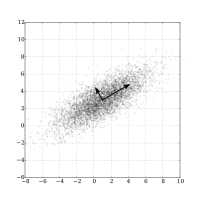
Photo from wikipedia
The energy consumption by non-residential consumers in China accounts for a significant proportion of the total energy consumption in the society. Thus, accurate non-residential load forecasting plays an increasingly essential… Click to show full abstract
The energy consumption by non-residential consumers in China accounts for a significant proportion of the total energy consumption in the society. Thus, accurate non-residential load forecasting plays an increasingly essential role in the future grid planning and operation. In this paper, a method based on LSTM recurrent neural network is proposed to predict the load of non-residential consumers using multiple correlated sequence information. First, the k-means is employed to analyze the daily load curves of non-residential consumers, classify and mine the consumer’s energy consumption behavior patterns. Then, the Spearman correlation coefficient is applied to investigate the time correlation under multiple time series for non-residential consumers. It is found that there exist multiple related time sequences such as adjacent time points, the same time points in adjacent days, and the same day in adjacent weeks among data samples for a specific consumer. Therefore, a non-residential load forecasting framework based on multiple sequence LSTM recurrent neural networks is presented. The proposed framework is tested on a real data set, which contains 48 non-residential consumers’ energy consumption data in China, and outperforms the other load forecasting approaches. Experiment results show that this method can effectively utilize the multiple sequence information, and successfully capture the dependencies among these sequences.
Journal Title: IEEE Access
Year Published: 2018
Link to full text (if available)
Share on Social Media: Sign Up to like & get
recommendations!